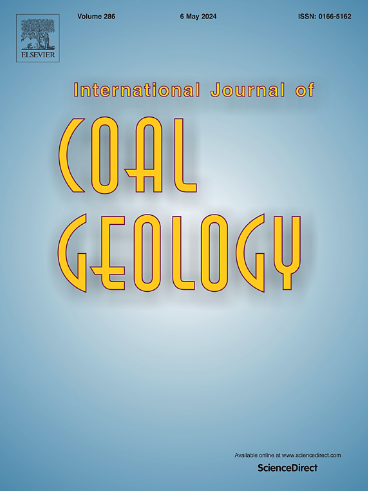Assessment of biocoke behaviour in a ferromanganese smelting pilot furnace: A petrographic approach
IF 5.7
2区 工程技术
Q2 ENERGY & FUELS
引用次数: 0
Abstract
This study presents a pioneering investigation into the behaviour of biocoke, particularly its biogenic component (biochar), during ferromanganese production. Employing μCT scanning, micro-Raman spectrometry, and organic petrology, the research explores the transformation of organic matter throughout different zones of a pilot ferroalloy furnace. The results reveal that the degradation of biocoke and its biocomponent varies significantly depending on the relevant position within the furnace and the temperature conditions. Notably, the biocoke with a 20 % charcoal addition maintained structural integrity and functioned effectively as a reducing agent, contrary to concerns about premature gasification due to the high reactivity of biochar. Microscopic analysis confirmed the presence of partially preserved biochar even at the furnace's lowest levels, indicating active participation in the reduction process. Furthermore, the study provides compelling evidence of partial graphitisation within both the coke matrix and the biogenic component, most likely facilitated by catalytic effects from molten and/or vaporised metals such as iron and manganese at temperatures exceeding 1500 °C. The occurrence of semi-graphitic structures was confirmed by Raman spectroscopy. The work also advocates for a distinct classification of organic inerts of biomass origin, acknowledging their unique gasification and thermal behaviours. This classification should be refined through broader studies involving diverse biochar sources and interlaboratory comparisons. The findings validate the viability of biocoke as a sustainable and economically feasible reductant in ferroalloy production, as demonstrated through the Biocoke4FAI research project.
锰铁熔炼中试炉中生物焦行为的评价:岩石学方法
这项研究提出了一个开创性的调查行为的生物焦,特别是其生物成分(生物炭),在锰铁生产。采用μCT扫描、微拉曼光谱和有机岩石学等方法,对铁合金中试炉不同区域的有机质转化进行了研究。结果表明,生物焦及其生物组分的降解随炉内相关位置和温度条件的不同而发生显著变化。值得注意的是,添加20%木炭的生物炭保持了结构完整性,并有效地发挥了还原剂的作用,这与生物炭的高反应性导致过早气化的担忧相反。显微分析证实,即使在炉子的最低水平,也存在部分保存的生物炭,表明积极参与还原过程。此外,该研究还提供了令人信服的证据,证明焦炭基体和生物成分中都存在部分石墨化,这很可能是在温度超过1500°C时,熔融和/或汽化金属(如铁和锰)的催化作用促成的。用拉曼光谱证实了半石墨结构的存在。这项工作还提倡对生物质来源的有机惰性进行明确的分类,承认它们独特的气化和热行为。这种分类应该通过涉及不同生物炭来源和实验室间比较的更广泛的研究来完善。正如Biocoke4FAI研究项目所证明的那样,研究结果验证了生物炭作为铁合金生产中可持续且经济可行的还原剂的可行性。
本文章由计算机程序翻译,如有差异,请以英文原文为准。
求助全文
约1分钟内获得全文
求助全文
来源期刊

International Journal of Coal Geology
工程技术-地球科学综合
CiteScore
11.00
自引率
14.30%
发文量
145
审稿时长
38 days
期刊介绍:
The International Journal of Coal Geology deals with fundamental and applied aspects of the geology and petrology of coal, oil/gas source rocks and shale gas resources. The journal aims to advance the exploration, exploitation and utilization of these resources, and to stimulate environmental awareness as well as advancement of engineering for effective resource management.
 求助内容:
求助内容: 应助结果提醒方式:
应助结果提醒方式:


